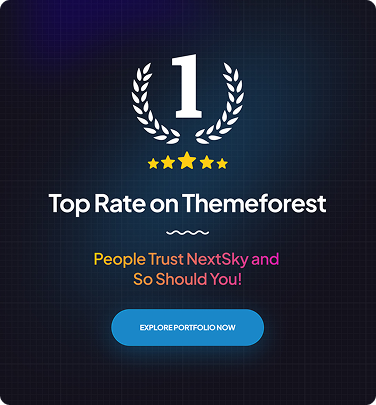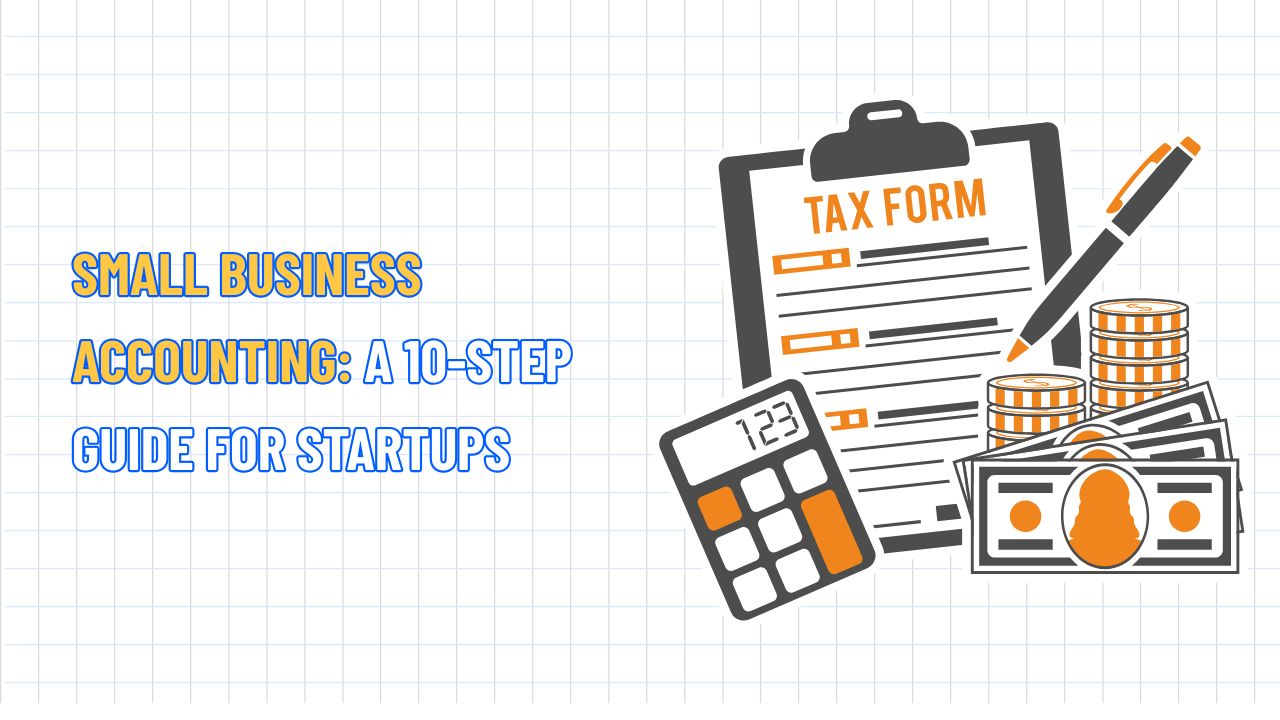How to Drive Traffic to Your Website for Sustainable Growth
Table of Contents Hide
In a competitive online market, a website alone isn't enough. If you’re asking how to get traffic to your website, reports indicate that only 22% of users enter URLs directly, with the remaining 78% coming from search, social media, referrals, or ads. E-commerce brands must master multi-channel strategies to attract quality traffic. This guide, NextSky shares battle-tested tactics that leverage structured data and internal linking to boost organic search visibility by over 40%.
How to drive traffic to your website with 25 tips
1. Optimize on-page elements
On-page optimization remains the foundation of discoverability, ensuring that search engines and users instantly grasp the value of your page. Start with concise, keyword-rich title tags (under 55 characters) and compelling meta descriptions that summarize benefits and prompt clicks.

- Craft unique title tags for each page, placing primary keywords at the beginning.
- Write sentence-style meta descriptions under 145 characters with clear calls-to-action.
- Use heading tags (H1–H3) hierarchically to outline content and reinforce the relevance of each topic.
Read more: TOP 30+ Best Shopify Stores of a Year that You Shoudn't Miss
2. Drive traffic with niche collection pages
One of the fastest levers for organic growth in e-commerce is building hyper-specific collection pages. Each page opens new opportunities for long-tail search rankings. Instead of a generic "Dresses" page, create ones like "Summer Maxi Dresses Under $100" or "Sustainable Linen Dresses for Weddings."
- Ensure each collection has at least five products with unique, benefit-focused descriptions.
- Draw ideas from Google Shopping filters or AI-driven product CSV analysis.
- Link internally from high-authority pages to boost ranking power to deeper pages.
3. Secure high-quality backlinks
Backlinks are proof of credibility to Google. Invest selectively in links from top-tier sites to strengthen expertise and elevate brand rankings.
- Contribute guest posts to industry blogs with original data or case studies.
- Curate expert roundups and notify contributors to share on social media.
- Offer free themes to influencers for honest reviews with links.
4. Build an innovative internal linking structure

Internal linking is critical for distributing page authority, guiding natural user flow, and helping search engines understand your site's structure and hierarchy.
- Link from pillar pages (e.g., homepage) to conversion-focused pages with descriptive anchor text.
- Add breadcrumb navigation and submit XML sitemaps to Google Search Console.
- Audit quarterly for orphaned pages and broken links.
5. Implement structured data for rich results
Structured data enhances product visibility on SERPs through valuable rich snippets, like star ratings, prices, and FAQs. This standout presence boosts click-through rates and search appeal.
- Use JSON-LD markup for products, reviews, and collections.
- Validate with Google's Rich Results Test and monitor performance in Search Console.
- Highlight unique theme features (e.g., "One-Click Demo Import") in markup.
6. Optimize local SEO (if applicable)
For brands with pop-up stores or local retail partnerships, verify your Google Business Profile to shine in "near me" searches and attract nearby customers efficiently.
- Keep NAP (Name, Address, Phone) consistent across directories.
- Encourage customer reviews and respond promptly.
- Target geo-specific keywords, such as "Shopify themes the US."
Read more: TOP 45 SEO Checklist Online Stores that Merchants Cann't Miss
7. Conduct regular technical SEO audits
Even minor issues, such as redirect errors or slow image loading, can significantly impact rankings. Rigorous oversight of these factors is non-negotiable.
- Utilize Semrush or Ahrefs to identify 404 errors, duplicate content, and Core Web Vitals issues promptly.
- Optimize performance by compressing CSS/JS files, enabling browser caching, and converting images to WebP.
- Aim for a First Contentful Paint (FCP) of under 1.8 seconds for a smooth experience and improved SEO rankings.

8. Adapt content for AI-driven search
With AI Overviews appearing in over 13% of search queries, Google prioritizes in-depth, data-backed, high-value content. To align with user intent:
- Include proprietary stats, customer testimonials, and embedded videos.
- Structure answers in clear paragraphs with bullet-point summaries for featured snippets.
- Optimize YouTube videos with chapters and subtitles.
9. Launch a strategic blog
Blogs naturally build topical authority and guide readers to product pages. For maximum impact, create in-depth, connected content strategies:
- Map topics to all stages of the buying journey—awareness, consideration, and decision.
- Refresh evergreen posts annually with updated data and internal links to sustain SEO strength.
- Promote via email newsletters and social media snippets.
10. Create high-impact video content
YouTube is a massive referral traffic source and an actual search engine. Strategic video content expands reach and boosts conversions.
- Create "micro-tutorial" videos, such as 60-second theme setup guides or 5-minute customization tips, to deliver concise, engaging content that lands in recommendations.
- Add end-screen CTAs linking to your demo store.
- Embed videos in collection pages to increase dwell time and positive engagement signals for Google.

11. Start a niche podcast or webinar series
Podcasts build brand loyalty and organically expand listener reach.
- Invite successful store owners who use your theme to share their real-world journeys and insights.
- Include links to collections or resources in show notes to drive exploration.
- Gate in-depth or exclusive episodes behind email sign-up forms to grow contacts and foster exclusivity.
12. Grow and segment email lists
Email marketing delivers the highest ROI in digital strategies, averaging $36 per $1 spent. Nurture lists with valuable, personalized content.
- Offer resources like “Website Speed Optimization Checklist” to encourage sign-ups.
- Segment lists by theme preferences, store size, or engagement level for targeted, personalized campaigns.
- Set up re-engagement email sequences for inactive subscribers, including reminders, special offers, and invitations to new features.
- Focus on solutions and insights over pure promotion to stay top-of-mind without overwhelming your audience.
13. Dominate organic social media
With 73% of consumers discovering products through social media, it's a powerful platform for building trust and community. Focus on value, inspiration, and genuine engagement over hard sells.
- Run UGC contests, like "Best Store with Glozin, Win a Year of Free Updates."
- Answer questions in r/Shopify or Facebook groups, linking to helpful resources to build credibility.
- Repurpose Reels for TikTok and Pinterest to broaden reach.
- Share insights, stories, and tips to create authentic connections and lasting trust.

14. Run viral giveaways and contests
Contests spark organic sharing and collect high-quality zero-party data. Designed smartly, they boost engagement and grow leads.
- Require website visits and email sign-ups for a chance to access premium themes.
- Partner with niche creators to share contests with loyal audiences for authentic reach.
- Add countdown timers on landing pages or posts to drive immediate participation.
15. Offer time-sensitive social media discounts
Scarcity is a powerful driver of action and conversions. Turn social media into an instant demand channel with limited-time offers.
- Launch short-term deals like "Next 50 Customers Get 30% Off Umino, Link in Bio, Ends in 3 Hours."
- Use Stories stickers and countdown widgets to highlight time left, sparking excitement and interaction.
- Attach UTM parameters to discount codes to track clicks, conversions, and top-performing channels.
16. Launch targeted Google Shopping ads
Google Shopping ads capture high-intent buyers at the bottom of the funnel, who are ready to make a decision. Maximize impact with visuals, data, and smart bidding.
- Utilize high-resolution lifestyle images that showcase products in real-world settings to help buyers visualize the value.
- Include full GTINs, detailed descriptions, and transparent pricing to boost Google’s understanding and search visibility.
- Increase budgets for branded and competitor keywords to dominate comparison stages while protecting brand position.
- Enable Google's auto-bidding to optimize for conversions, targeting customers with a high likelihood of purchase.

17. Retarget warm audiences
Approximately 90% of visitors leave without making a purchase, making remarketing crucial to bring them back and encourage them to complete a purchase. A personalized, innovative approach turns exits into revenue.
- Use Dynamic Remarketing to show theme variants that users previously viewed.
- Deploy compelling messages like "Abandoned Cart? Get 15% Off Your First Theme." This gentle nudge drives action.
- Exclude recent buyers from remarketing to avoid wasted spend and focus on high-conversion groups.
- Combine Google, Facebook, and email remarketing to maintain a consistent brand presence throughout the buyer's journey.
18. Partner with niche influencers
Micro-influencers (10K–50K followers) drive 60% higher engagement than macro-influencers due to their tight-knit, trusting communities.
- Offer lifetime free access for honest reviews and real-world experiences.
- Co-create "Day in the Life" videos showcasing theme customization for authenticity and applicability.
- Track performance with unique affiliate links to measure sales and ROI per influencer.
19. Create live buzz
Events and packaging bridge the gap between offline and online, deepening engagement and leaving lasting impressions.
- Print smart QR codes on business cards or marketing materials, linking to mobile theme demos for instant exploration.
- Add surprise value to physical shipments with cards that say "Scan for Exclusive Theme Bundle," sparking curiosity and site returns.
- Host community events, such as local Shopify workshops, where attendees experience themes hands-on and connect with developers.
20. Activate affiliate marketing
Turn customers into brand ambassadors with compelling commission programs that boost sales and naturally spread credibility.
- Offer recurring 20% commissions per referred theme sale to incentivize long-term promotion.
- Provide comprehensive toolkits with professional banners, email templates, and custom links for easy and effective promotion.
- Spotlight top affiliates in monthly newsletters to foster community spirit and encourage contributions.
Read more: How to Set Up an Affiliate Program for Your Shopify Store
21. Send personalized push notifications
Push notifications can boost app open rates by 88% compared to email, but their effectiveness hinges on a strategic and subtle use.
- Send concise, timely, value-driven notifications, such as "Glozin 2.0 Just Launched for Faster Checkouts, Update Now!" to spark curiosity and action.
- Tailor pushes by operating system (iOS, Android) and recent activity for relevant messaging.
- Optimize with A/B tests on emojis, headline length, and send times to find the most engaging formula.
22. Secure earned media and listings
Develop an effective media strategy to enhance product value and broaden your target audience.
- Respond to HARO queries with exclusive speed or performance data to be cited as a trusted expert.
- List themes on Shopify Experts Marketplace and niche directories to reach ideal customers.
- Create a media kit with high-quality images, logos, icons, and short descriptions for easy use by the press and partners.
23. Optimize product feeds
A meticulously optimized, accurate product feed is the backbone of effective Shopping ad campaigns, ensuring standout visibility on marketplaces.
- Include detailed specs like speed scores, compatibility, and one-click install features to differentiate products and boost clicks.
- Connect for auto-updated inventory and pricing to prevent stockouts or data errors that lead to ad rejections.
- A/B test “brand-first” vs. “feature-first” title formats to identify which drives more buyer clicks.
24. Pre-launch upcoming themes
Early indexing helps you capture demand and outpace competitors for impactful launches. Thorough pre-launch prep fuels rapid attention and growth.
- Create password-protected preview pages 60 days before launch for Google to crawl while maintaining secrecy.
- Seed early word-of-mouth with backlinks from beta tester testimonials sharing authentic, trusted experiences.
- Collect emails via early sign-up forms with compelling messages, such as "Get Exclusive Launch Day Discounts," to build anticipation.
25. Measure, iterate, and compound
Sustainable traffic comes from disciplined, data-driven strategies, not luck. Tie every action to clear metrics and goals for long-term growth.
- Track core metrics like organic sessions, paid ad ROAS, and email marketing revenue for comprehensive performance insights.
- Identify drop-off points and refine CTAs for clarity and speed to retain users and boost conversions.
- Shift budgets quarterly from underperforming channels to the top 3 performers, ensuring resources fuel high-return efforts.
How to choose the right marketing strategy
- Define goals: Decide if your priority is short-term sales spikes or building long-term loyal audiences. Clear goals guide strategy and resource allocation.
- Know your audience: Understand where your customers are, what they like, and what drives their actions to craft resonant messages.
- Assess your budget: The 2025 CMO survey suggests that small businesses allocate ~11% of their revenue to marketing, but evaluate your resources to develop sustainable strategies.
- Leverage skills (or hire experts): Tackle simple tactics like blogging or email marketing in-house. For advanced efforts such as SEO, PPC, or video production, consider hiring specialists to maximize your ROI.
- Start small, then scale: Test 1–2 key strategies before expanding. Consistent learning from data drives sustainable growth.
- Measure and optimize: Use Shopify Analytics or Google Analytics to track traffic, conversions, AOV, and user behaviour. Adjust strategies if goals aren't met.









